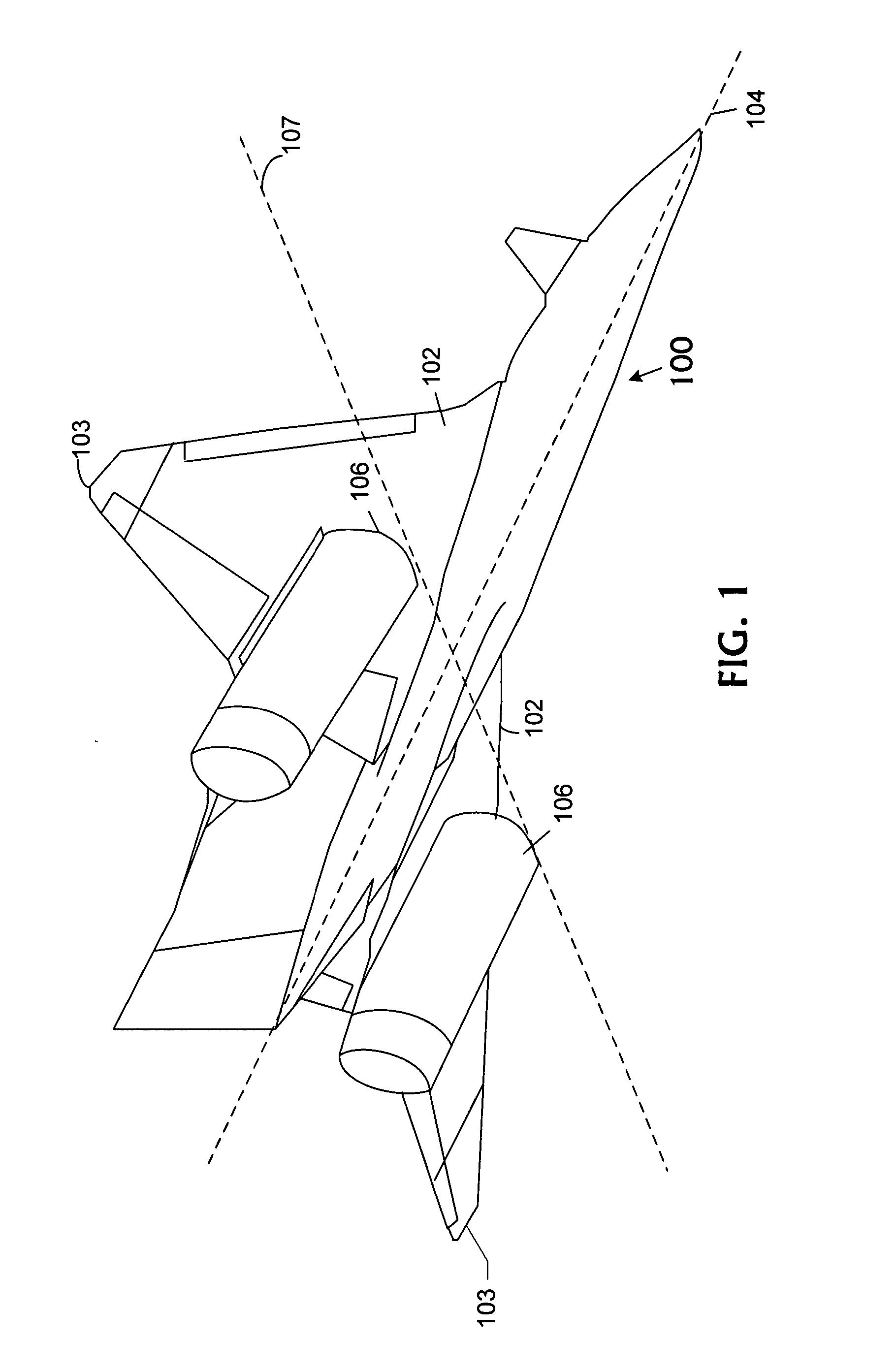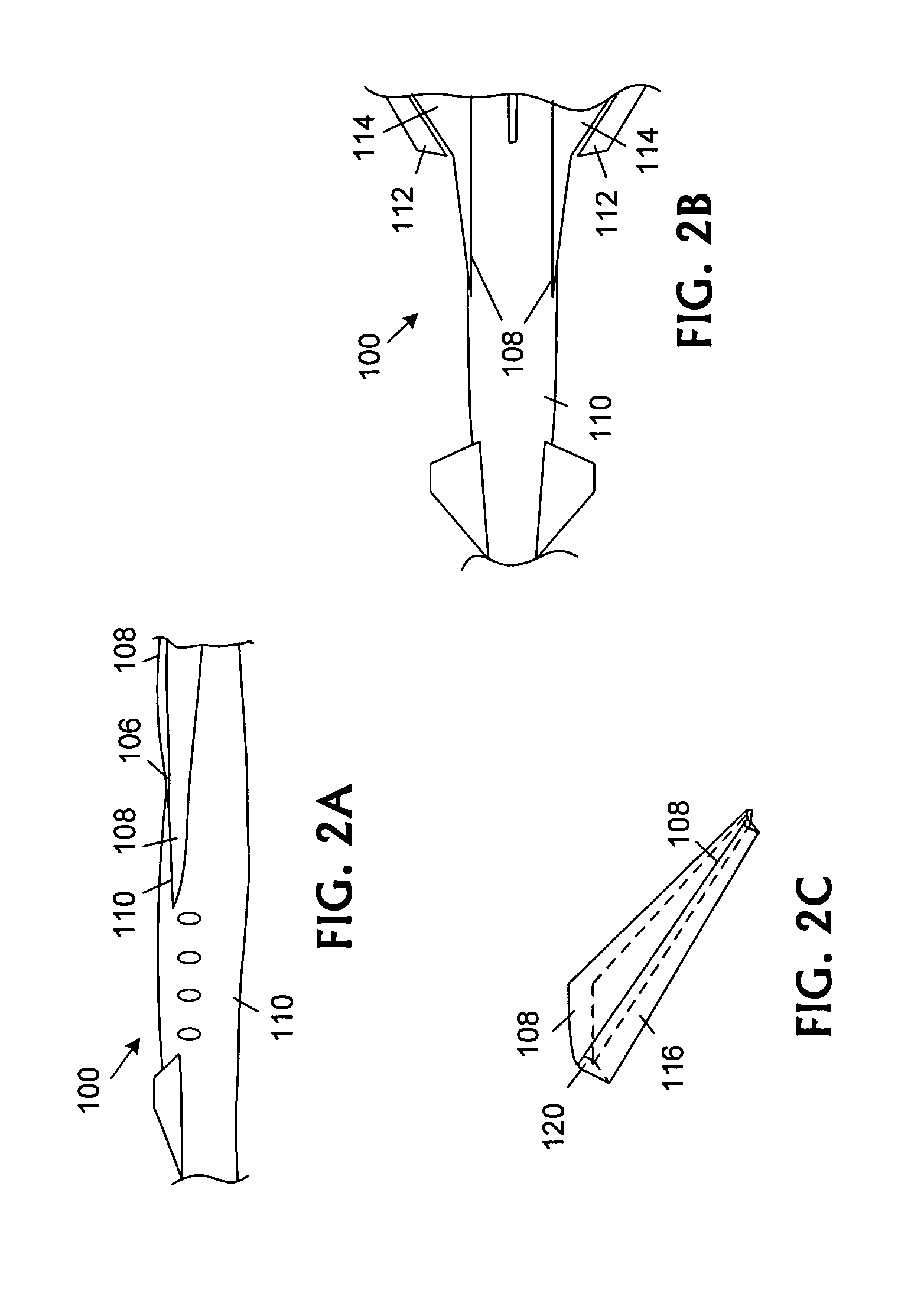Wing employing leading edge flaps and winglets to achieve improved aerodynamic performance
- Summary
- Abstract
- Description
- Claims
- Application Information
AI Technical Summary
Benefits of technology
Problems solved by technology
Method used
Image
Examples
Embodiment Construction
[0035] Preferred embodiments of the present invention are illustrated in the FIGUREs, like numerals being used to refer to like and corresponding parts of the various drawings.
[0036]FIG. 1 illustrates an example of an aircraft 100 having a longitudinal axis 104 forward and aft to which an airfoil is coupled. Airfoils are generally designed to maximize aerodynamic performance at a particular Mach number or range of Mach numbers. In various circumstances and conditions, operation at off-design Mach numbers is desirable. The airfoil includes aircraft wings 102. However, the airfoil may also include other aerodynamic shapes including the fuselage, tail, and other structures within the air stream. Wings 102 can further include winglets 103.
[0037]FIGS. 2A, 2B, and 2C illustrate side, top, and three-dimensional perspective views of an embodiment of portions of wings for usage on aircraft 100. Wings 102 couple to a strake 108 that couples to aircraft fuselage 110 and extends along a porti...
PUM
 Login to View More
Login to View More Abstract
Description
Claims
Application Information
 Login to View More
Login to View More - R&D
- Intellectual Property
- Life Sciences
- Materials
- Tech Scout
- Unparalleled Data Quality
- Higher Quality Content
- 60% Fewer Hallucinations
Browse by: Latest US Patents, China's latest patents, Technical Efficacy Thesaurus, Application Domain, Technology Topic, Popular Technical Reports.
© 2025 PatSnap. All rights reserved.Legal|Privacy policy|Modern Slavery Act Transparency Statement|Sitemap|About US| Contact US: help@patsnap.com



